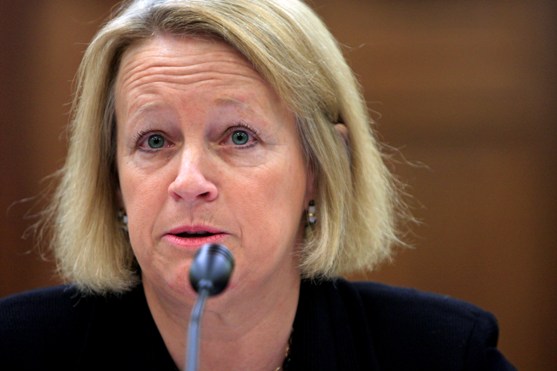The Securities and Exchange Commission is continuing to beef up and streamline its technology, adding new systems to track and catch fraudsters and other financial miscreants.
The Securities and Exchange Commission is continuing to beef up and streamline its technology, adding new systems to track and catch fraudsters and other financial miscreants.
That’s according to Mary Schapiro, chairman of the SEC. She made her remarks this morning in Miami Beach, Fla., to the Securities Industry and Financial Markets Association’s compliance and legal society annual seminar.
The SEC also plans to improve its website, sec.gov, in the coming years, she said.
“Investors will enjoy the ease with which they access up-to-date information, malefactors will find themselves tracked by more comprehensive investigations, and [the securities industry] will benefit, I hope, from more focused and effective exams and a simpler filing process,” Ms. Schapiro said.
Technology is one of the “pillars” of effective regulation and oversight, along with the staff of the SEC, Ms. Schapiro said.
The SEC is working to bring its systems into the 21st century and has taken “significant steps” to improve its information infrastructure, she said.
A new division is working with existing SEC divisions such as enforcement “to build data-driven models that help us efficiently target examinations and investigations,” she said.
For example, the SEC’s Office of Compliance Inspections and Examinations is “using quantitative models, along with qualitative approaches, to identify firms most worthy of a review and to efficiently target areas of interest within examinations,” she said.
And the new effort is bearing fruit, according to Ms. Schapiro. In December the new systems identified four hedge fund advisers, who were charged with inflating returns, overvaluing assets and other actions that misled and harmed investors, Ms. Schapiro said.
A lack of cutting-edge technology has been considered a weakness of the SEC, particularly in an era of advancing systems and high-speed trading.
When Ms. Schapiro took over the SEC in 2009, the demands of the agency were clearly outpacing its resources, including technology, she said. For example, between 2003 and 2009, the dollar value of trading volume had grown 163%, the number of investment advisers had risen 43% and the number of broker-dealer branch offices had shot up 86%, she said. By contrast, the SEC’s information and technology budget dropped between 2005 and 2009.
Recent budget increases have begun to remedy the technology shortfall, and new systems designed to better track information are to be up and running soon, Ms. Schapiro said.







